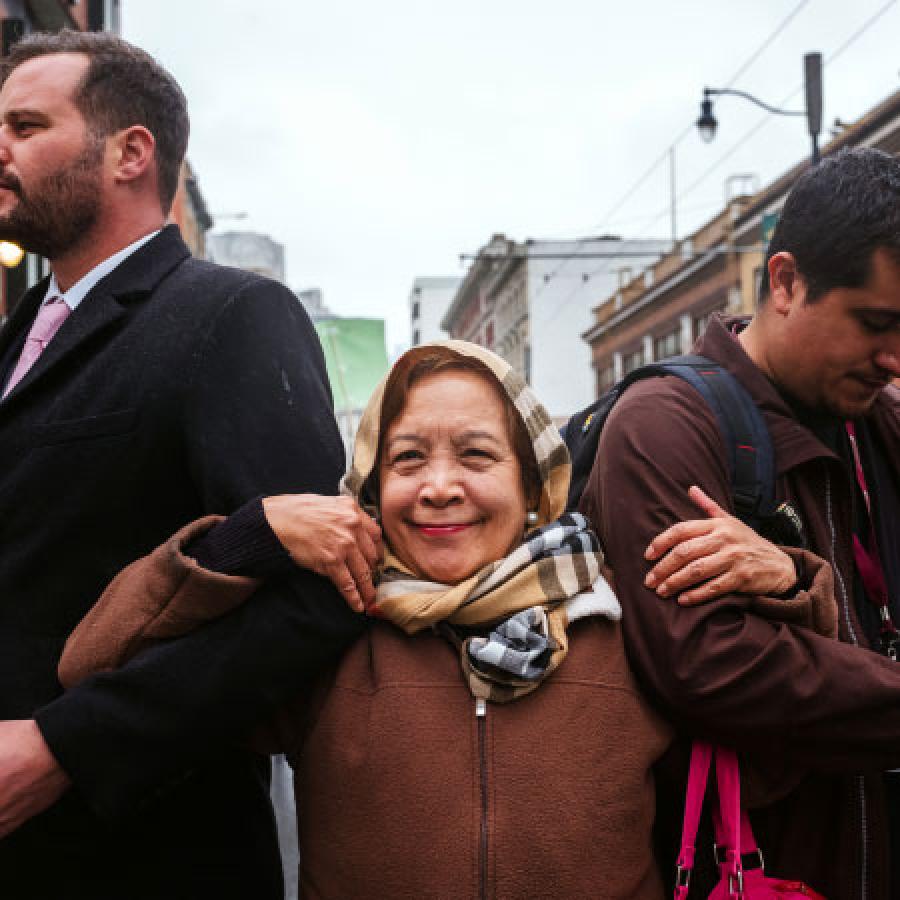People of color: Nurturing diversity and fostering racial equity are critical to our future prosperity.
Insights & Analyses
- The US population is projected to become majority people of color between 2040 and 2050.
- All US states except Hawaii were majority white in 1980; but eight more are projected to become majority people of color by 2030, reaching a total of 19 states by 2060.
- Between 2020 and 2060, among the largest 150 regions, the three regions projected to see the largest increases in the percentage of people of color are Reading, Pennsylvania (rising from 32 to 66 percent), Lakeland, Florida (rising from 46 to 80 percent), and New Haven-Milford, Connecticut (rising from 41 to 72 percent).
- Only three of the largest 150 regions are projected to see a decline in the percentage of people of color between 2020 and 2060, including Wilmington, NC (falling from 24 to 19 percent), Charleston-North Charleston, SC (falling from 37 to 33 percent), and Honolulu, HI (falling from 83 to 80 percent)..
- While people of color tend to be most concentrated in counties in Southwestern and Southern states, as of 2020, several counties in predominantly white states such as South Dakota and Montana are up to 97 percent people of color due to large Native American populations.
Drivers of Inequity
The proportion of people of color in the United States has grown dramatically since the 1980s. Increased immigration from regions including Latin America and Asia and interracial marriages and partnerships since the late 20th century, have contributed to this shift. Latinx and Asian populations are currently the fastest-growing populations in the United States.
Strategies
Grow an equitable economy: Policies to leverage diversity as an asset
- Foster racial inclusion in governance.
- Build multiracial alliances, coalitions, and movements to advance policy change, including pro-immigrant policies.
- Dismantle barriers and build pathways to economic opportunity for boys and men of color.
- Include immigrants by ensuring access to health care, driver's licenses, in-state tuition, and municipal ID cards regardless of immigration status.
- Enact strong language access policies requiring interpretation and translation services for English-language learners and facilitate naturalization among green-card holders.
- Limit the participation of local law enforcement with Immigration and Customs Enforcement and support community-led alternatives to policing and invest-divest strategies in communities of color.
- Strengthen democracy by increasing participation of marginalized groups, expanding voting rights (and preventing rollback), and building leadership development pipelines.
- At the federal level, end the lifetime ban on public benefits for people with criminal records, ensure that releasees from federal prison receive essential identification documents and access to transition social services to support reentry, and enact all-mail elections, automatic voter registration, and extended voting periods.
Strategy in Action
One Fairfax Commits the County and Schools to Consider Equity in Fairfax, VA. In 2017, the Board of Supervisors and School Board in Fairfax County, Virginia, passed the One Fairfax Policy, which commits the County and schools to intentionally consider equity when making policies or delivering programs and services. Through this effort, Fairfax County Government departments describe how they will advance equity in annual Equity Impact Plans. In spring 2024, the County launched the One Fairfax Community Roundtable, which is composed of 19 members representing the County's low income communities and people of color, and other underrepresented groups. The purpose of the One Fairfax Community Roundtable is to leverage members’ insights, experiences, and understanding of the drivers of inequity in Fairfax County to monitor, inform, and support the County’s efforts to advance racial and social equity in alignment with the Countywide Strategic Plan and the county’s One Fairfax Racial and Social Equity Policy. Read more.

Resources
- Reports: Racial Equity in Our Cities; Promising Practices and Lessons from Local Communities; Providing Identification to Unauthorized Immigrants; Improved Race and Ethnicity Measures Reveal U.S. Population Is Much More Multiracial; Growing Racial Diversity in Rural America: Results from the 2020 Census; Why a MENA Category Matters; State of Asian Americans, Native Hawaiians, and Pacific Islanders in the US; A Profile of the US Latino Population, 2000-2020
- Data: DiversityDataKids.org; Black Census Project; AAPI Data; Latino Data Hub; Our Changing Population: United States


